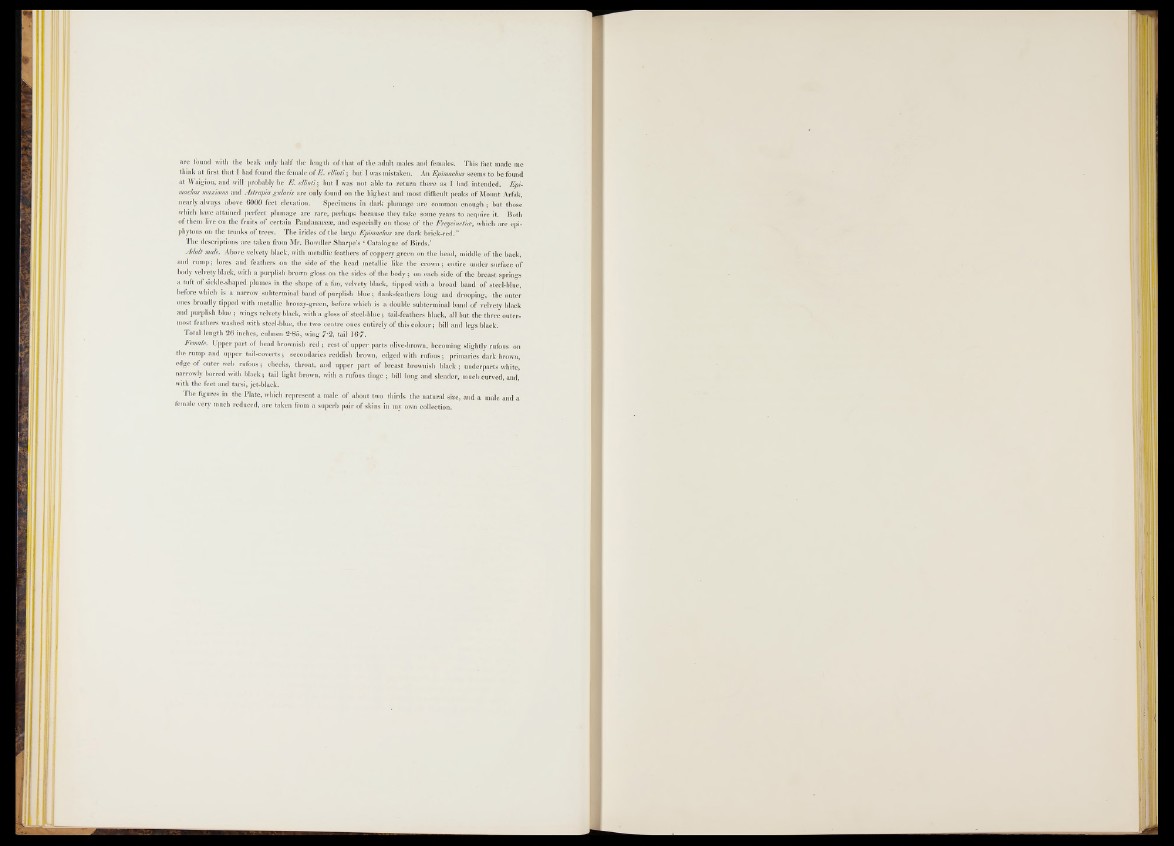
are found with the beak only half the length of that of the adult males and females. This fact made me
think at first that I had found the female of E . el/ioti; but I was mistaken. An Epimachus seems to be found
at Waigiou, and will probably be E . ellioti; but I was not able to return there as I had intended. Epi-
machus maaimus and Astrapia gularis are only found on the highest and most difficult peaks o f Mount Arfak,
nearly always above 6000 feet elevation. Specimens in dark plumage are common enough ; but those
which have attained perfect plumage are rare, perhaps because they take some years to acquire it. Both
o f them live on the fruits o f certain Pandanacese, and especially on those of the Freycineti(s, which are epiphytous
on the trunks o f trees. The irides o f the large Epimachus are dark brick-red.”
The descriptions are taken from Mr. Bowdler Sharpe’s ‘ Catalogue o f Birds.’
Adult male. Above velvety black, with metallic feathers o f coppery green on the head, middle o f the back,
and rump; lores and feathers on the side o f the head metallic like the crown; entire under surface o f
body velvety black, with a purplish brown gloss on the sides of the body ; on each side of the breast springs
a tuft o f sickle-shaped plumes in the shape o f a fan, velvety black, tipped with a broad band o f steel-blue,
before which is a narrow subterminal band o f purplish blue; flank-feathers long and drooping, the outer
ones broadly tipped with metallic bronzy-green, before which is a double subterminal band o f velvety black
and purplish blue ; wings velvety black, with a gloss of steel-blue; tail-feathers black, all but the three outermost
feathers washed with steel-blue, the two centre ones entirely o f this colour; bill and legs black.
Total length 26 inches, culmen 2 -85, wing 7 '2, tail 16*7.
Female. Upper part o f head brownish red ; rest o f upper parts olive-brown, becoming slightly rufous on
the rump and upper tail-coverts; secondaries reddish brown, edged with rufous; primaries dark brown,
edge o f outer web rufous; cheeks, throat, and upper part o f breast brownish black; underparts white,
narrowly barred with black; tail light brown, with a rufous tinge ; bill long and slender, much curved, aud,
with the feet and tarsi, jet-black.
The figures in the Plate, which represent a male o f about two thirds the natural size, and a male and a
female very much reduced, are taken from a superb pair of skins in my own collection.